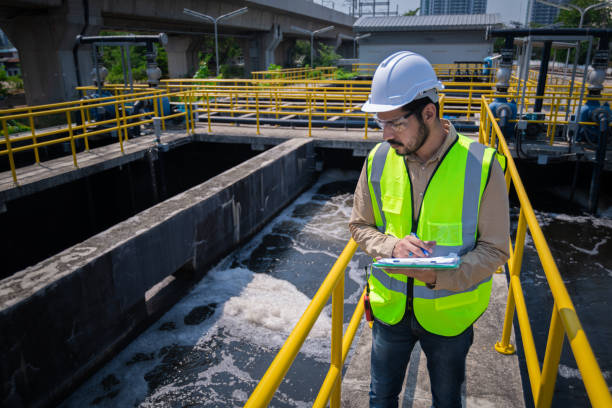Behind the Scenes: Key Essentials in Wastewater Treatment Facilities
When you turn on the tap or flush a toilet, you probably don’t think about the complex systems working tirelessly to protect public health and the environment. Wastewater treatment facilities are the unsung heroes of modern society, ensuring that water used in homes, businesses, and industries is safely cleaned before returning to nature. Behind the scenes, these facilities rely on essential processes, equipment, and people to get the job done. Let’s take a closer look at the key essentials that make wastewater treatment possible.
1. The Intake and Screening Stage
Every wastewater journey begins at the intake. Here, water from sewers or collection systems enters the facility carrying debris such as sticks, plastics, and rags. If left unchecked, these materials could damage pumps and clog systems downstream. That’s why screening is the first line of defense. Large mechanical screens, bar racks, and grit chambers are used to trap and remove solid waste. Though simple, this step is essential—it prevents costly damage and ensures the rest of the treatment process runs smoothly.
2. Primary Treatment: Settling the Solids
Once the initial screening stage is complete, wastewater is directed—often through extensive industrial piping in Utah’s treatment facilities—into primary clarifiers. In these large tanks, gravity takes over: heavier solids sink to the bottom, forming sludge, while oils and lighter materials rise to the surface to be skimmed away. This step alone can eliminate 50–60% of suspended solids, making it one of the most critical early processes in treatment. The collected sludge undergoes further processing, while the partially clarified water continues forward into secondary treatment.
3. Secondary Treatment: Harnessing Microorganisms
The real magic of wastewater treatment happens during secondary treatment, where biology takes the lead. Here, microorganisms such as bacteria consume organic matter, breaking down pollutants that can’t be removed mechanically. Activated sludge systems, trickling filters, or sequencing batch reactors are commonly used to support this process. By providing oxygen and the right environment, these facilities allow microbes to thrive and naturally purify the water. Secondary treatment is essential for reducing harmful pathogens and protecting rivers, lakes, and oceans from contamination.
4. Tertiary Treatment: Polishing the Effluent
In many facilities, treatment doesn’t stop with biology. Tertiary treatment steps are used to further polish the water before it’s discharged. Advanced filtration, nutrient removal (such as nitrogen and phosphorus), and disinfection are often part of this phase. Chlorination, ultraviolet (UV) light, or ozone are common disinfection methods that kill any remaining bacteria and viruses. This step ensures the treated water meets strict environmental standards and is safe to reenter ecosystems—or, in some cases, be reused for irrigation or industrial processes.
5. Sludge Treatment and Disposal
While much of the focus is on cleaning water, wastewater facilities also handle large amounts of sludge. This byproduct of treatment is processed through thickening, digestion, and dewatering to reduce volume and stabilize organic material. In some facilities, sludge is converted into biosolids and repurposed as fertilizer, while in others, it may be incinerated or disposed of in landfills. Proper sludge management is essential not only for efficiency but also for environmental protection.
6. Monitoring and Control Systems
Modern wastewater treatment facilities rely heavily on automation and monitoring systems. Sensors and control panels track flow rates, oxygen levels, chemical dosages, and microbial health in real-time. Operators use this data to adjust processes, troubleshoot issues, and ensure compliance with regulations. Without continuous monitoring and skilled oversight, even the most advanced equipment could fail to deliver safe, clean water.
7. Skilled Workforce: The Human Factor
Behind every wastewater treatment facility is a team of dedicated professionals. Engineers, operators, and technicians play critical roles in maintaining equipment, responding to emergencies, and adapting processes to changing conditions. Their expertise ensures the facility operates efficiently, sustainably, and safely. Training, certification, and ongoing education are all essential in keeping these teams ready for the challenges of modern wastewater management.
8. Sustainability and Innovation
As environmental challenges grow, wastewater facilities are evolving. Many are adopting energy-efficient technologies, recovering resources like biogas from sludge digestion, and reusing treated water for industrial or agricultural purposes. These sustainable practices not only reduce operating costs but also help communities meet long-term environmental goals. Innovation in wastewater treatment is essential for creating resilient, eco-friendly cities of the future.
Final Thoughts
Wastewater treatment facilities may not be glamorous, but they are indispensable. From screening out debris to harnessing microorganisms, disinfecting water, and managing sludge, every step plays a critical role in protecting public health and preserving the environment. Behind the scenes, advanced equipment, monitoring systems, and skilled professionals keep everything running smoothly.
The next time you pour something down the drain, remember the complex journey it takes and the essential work happening at your local wastewater treatment facility. It’s a system built not just for today, but for a cleaner, healthier tomorrow.
Keep an eye for more latest news & updates on Qiuzziz!






